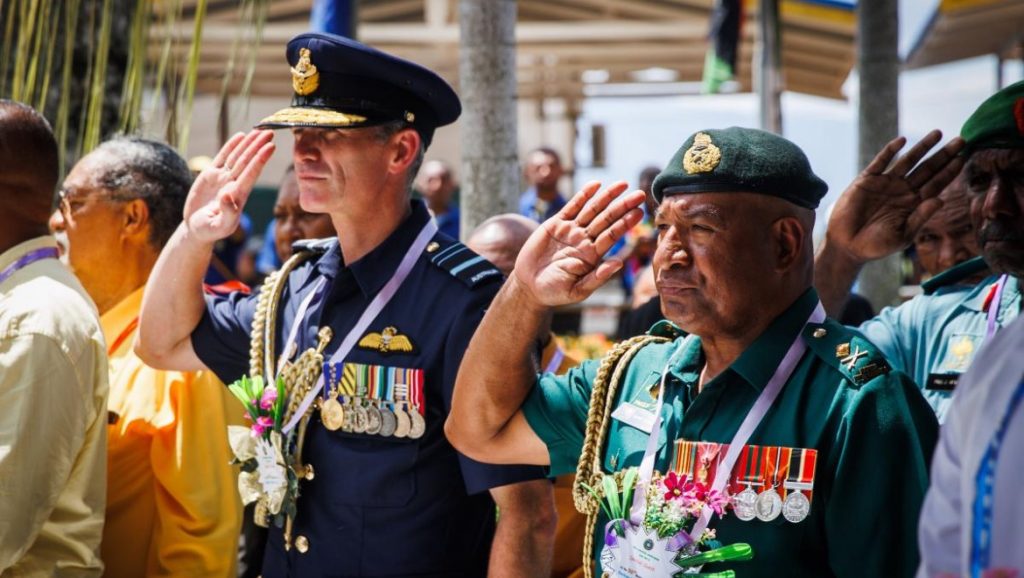
The new Chief of Air Force on Monday marked the 50th anniversary of a RAAF Caribou crash that killed 25 Australians and Papua New Guineans – most aged between 16 and 18.
Air Marshal Robert Chipman attended the service in PNG to remember the demise of A4-233, which was carrying school-aged cadets alongside three RAAF aviators and one Army liaison officer.
A RAAF C-27J Spartan from No. 35 Squadron conducted a flypast to pay respects to the fallen.
“On 28 August 1972, RAAF Caribou aircraft A4-233 took off from Lau heading to Port Moresby,” said Defence.
“The flight was part of Australia’s partnership with Papua New Guinea and was a way to provide assistance by reuniting young men with their families after the completion of a Papua New Guinean cadet training camp.
“While flying through the Kudjeru Gap, the pilot became concerned that low cloud was going to shroud his vision of the valley ahead and decided to turn around. Unfortunately, the aircraft struck trees and crashed. Most on board died instantly.”
AIRMSHL Chipman said onboard the Caribou were 25 Army cadets from De La Salle College in Australia and Popondetta High School in PNG.
“Aged between 16 and 18, these fine young men were considering honourable military careers in the service of their nation. Twenty-one had bright and promising futures which were tragically cut short by this accident,” said AIRMSHL Chipman.
“Also on the aircraft were three aviators from the RAAF and a liaison officer from the Australian Army. Like their passengers, these young Australians were serving their nation in uniform.”
AIRMSHL Chipman added that like many attending the ceremony, he had a personal connection to those lost in the tragic accident.
“My father was also flying Caribous at No. 35 Squadron in 1972,” he said.
“We lived in a house in Port Moresby during the months when he flew around the highlands and he was great mates with Graham, the aircraft captain. They joined the RAAF Academy together, learnt to fly Caribous on the same course, and played sport together.
“My younger brother is named Antony Graham, in honour of their friendship.
“Today, let us remember the 25 Papuan and Australians we lost, our shared sadness and the families who lost sons, brothers and friends in the crash.”
Built in Canada by Hawker de Havilland, the Caribou was designed to land on rough dirt runways near the battlefield.
It was often a vital tool to resupply troops and evacuate the injured when help was required at breakneck speed.
RAAF ordered its first Caribou in 1963 to replace the existing Dakotas, with a total of 29 acquired over the years.
The aircraft could carry 32 armed troops, 22 stretcher cases, two Land Rovers, or up to 4 tonnes of supplies.
Its large rear access ramp made it easy to open in flight to allow paratroopers to jump out or drop cargo.
It saw service in Vietnam when three landed at Vūng Tàu on Vietnam’s east coast in 1964.
















Loraine MacGillivray
says:This as an absolute tragedy. I was only a teenager living on the RAAF Base at Richmond. My father Ron Cook was the Engineering Officer at 38 Squadron when this happened. I remember so very well how devastated he was at this loss, the cadets but also the crew onboard that he knew so well.